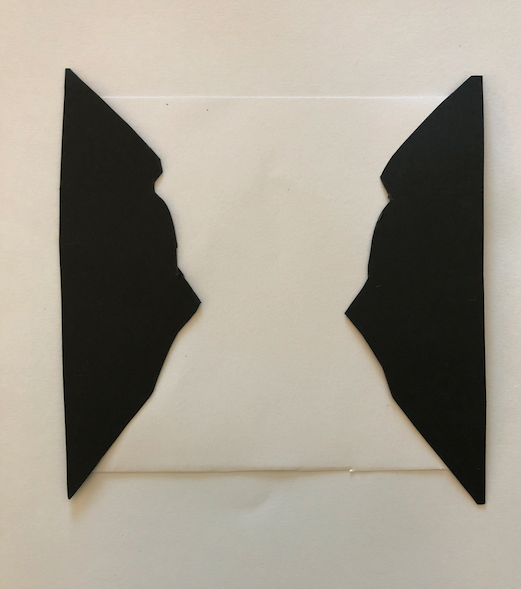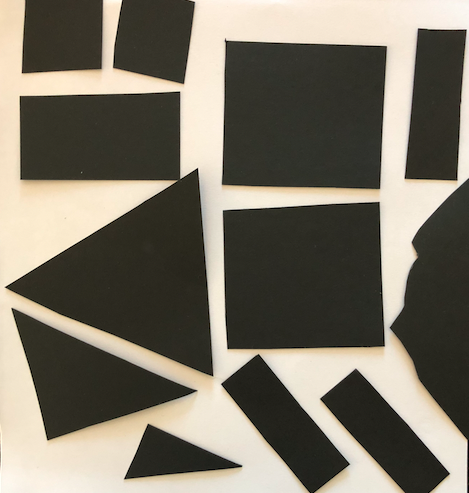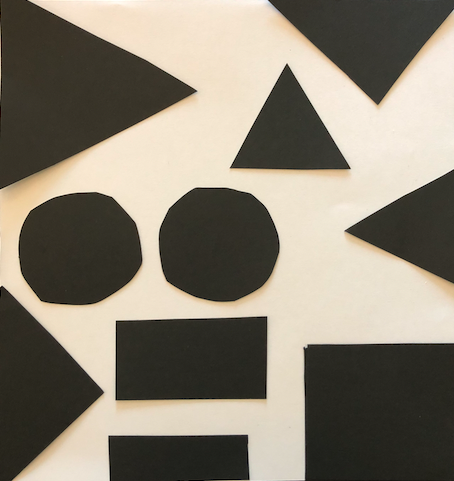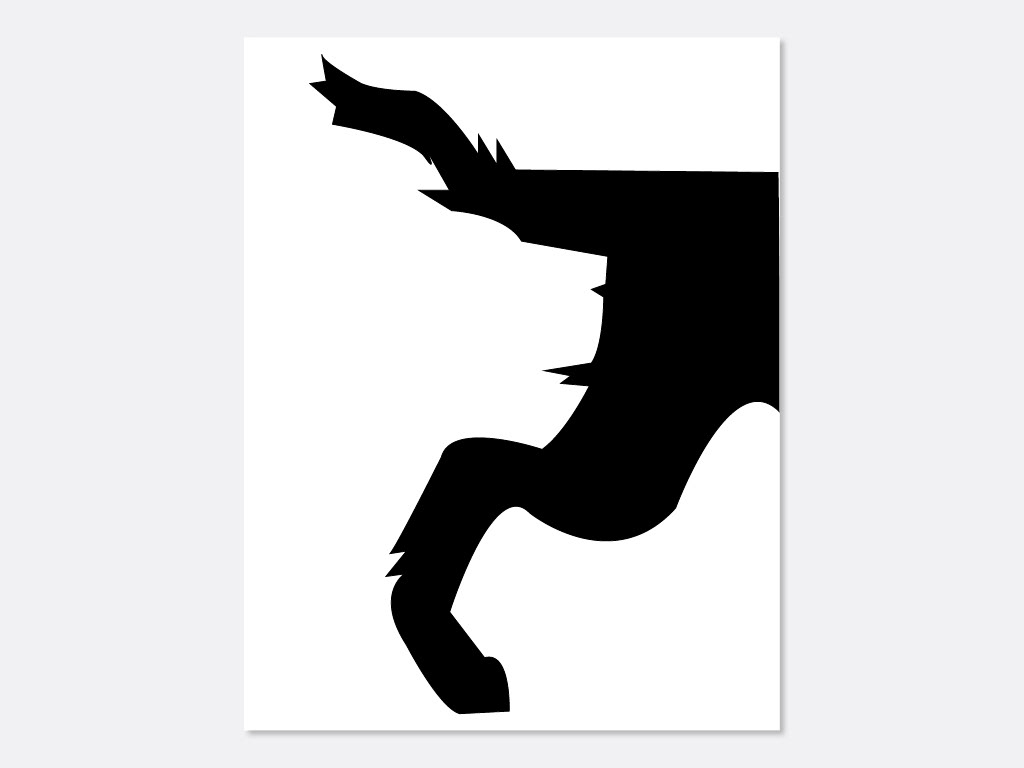- Rearrange shapes cut out of paper, and try to find the point at which the figure disappears into the ground.
- Cut out a series of shapes from black paper – squares, rectangles, circles and random shapes – in a variety of sizes, from small to large.
- Working with a square piece of white paper, place shapes of different sizes into the white space; place them on the white one at a time and move them around.
- Try to find the point where the distinction between figure and ground becomes unclear. Does it depend on which shape dominates the space: black or white? Is it about the position of the shape within the space? Think about how important figure-ground relationships are within composition and design.
- Write down your findings, and remember to take pictures of your progress. Submit these pictures and your write-up on your WordPress blog.
For this LT I have tried out different setups and played around with shapes that I cut from black paper. This first one is illustrating one of the most common figure/ground pictures when you search the web. It is supposed to be two faces or a vase (not perfectly illustrated from my end). Figure ground is a visual relationship between foreground and background. It’s a type of perceptual grouping which is necessary for recognizing objects through vision.


The first two pictures have a clear relationship between foreground and background.
In the next two pictures, it is not clear what is the foreground and what is the background. It is too much clutter, different shapes, and not enough breathing space.


In my research, most of the figure and ground pictures are two pictures in one and with a clear relationship between foreground and background. See the example below:


